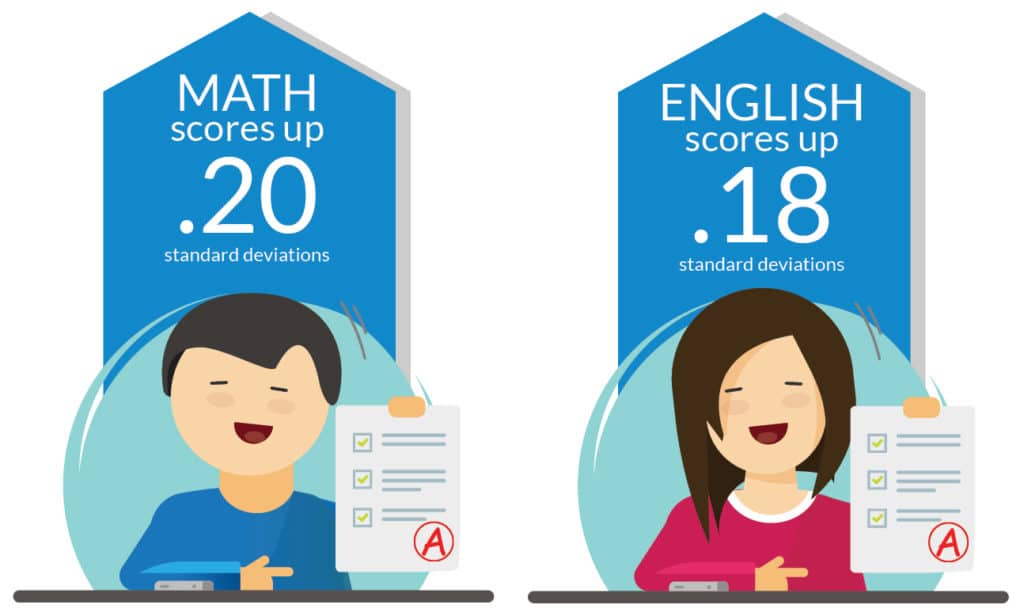Are You a Star Student When It Comes to Indoor Comfort?
Take the Quiz Below and Find Out!
 Test your knowledge of indoor comfort by answering the questions below.
Test your knowledge of indoor comfort by answering the questions below.
#1. The greatest energy use in school buildings is:
- a. lighting
- b. plug-in equipment
- c. HVAC
#2. Which improves student performance most?
- a. good indoor air quality
- b. 10% reduction in class size
- c. free school lunches
#3. What best reduces bacterial and viral particle counts in classrooms?
- a. regular duct cleaning
- b. hand wipe dispenser at classroom door
- c. UV lamps at air handlers
#4. Has improved indoor air quality been shown to improve student performance?
- a. no, not really.
- b. researchers have hypothesized there is some improvement
- c. yes, in multiple recent studies.
Answers:
#1. C.
According to the U.S. Office of Energy Efficiency and Renewable Energy, most of a school’s energy usage comes from its commercial HVAC system. The good news? Regular maintenance, energy efficiency upgrades and repairs can save you up to 40% in energy usage and utility costs.
#2.A
According to a working paper published by the National Bureau of Economic Research in 2018, “each 1° F increase in school year temperature reduces the amount learned that year by one percent.” Additionally, “each additional school day with temperature in the 90s (◦F) reduces achievement by one-sixth of a percent of a year’s worth of learning.”
#3. C.
UV lamps at handlers have been shown to be effective at not only eliminating mold inside the handler itself, but all mold within light range of the lamp. This sanitization results in cleaner air, fewer germs and a significant reduction in bacteria, viruses and other pollution reaching your students and staff.
#4. C.
A recent study at NYU shows that childrens’ math scores went up by 0.20 standard deviations and English scores by 0.18 standard deviations when indoor air pollution was reduced or eliminated with effective HVAC. And that these results from cleaner air were confirmed by similar research at the London School of Economics?

The Test Scores Are In
Installation of Carbon Air Filters Equivalent to Cutting Class Size by One Third When Measuring Impact on Student Achievement
California education budgets are under siege. Student achievement is the focus of today’s charter educators like never before. Every day brings new reporting on the perfect formula for maximizing student performance. Whether Common Core or an alternative educational initiative, we know teachers and administrators are under huge pressure to deliver results. Clearly, cleaner air and indoor comfort are part of the solution.
A Simple Initiative, a Big Payoff
That’s why the recent study conducted by NYU’s Dr. Michael Gilraine with the Annenberg Institute at Brown University is getting so much attention recently. Studying the consequences of the Aliso Canyon gas leak on students within a 5 mile radius of the disaster, he noted that the Porter Ranch-area school district in response had installed high-quality air filters within their classrooms to address any risk of airborne contaminants. What happened, however, as a result of this administrative decision surprised everyone, especially Dr. Gilraine.
At roughly $1,000 per unit, the air filter suites were not expensive nor elaborate by HVAC industry standards. However, since their installation, math and English test scores went up in the schools where they were placed by .18 (for English testing) to .20 standard deviations (in Mathematics). They remained this high even when data was controlled for detailed student demographics and their estimated pollution exposure in the home.
What’s more: these test scores have remained high ever since.
The Filter Factor and Indoor Comfort Makes a Difference
This “filter factor” is significant. For perspective, consider that lowering class size by one-third raises test scores by a standard deviation of only .09. That statistic is according to a recent study by the London School of Economics.
Simply put, clean air not only matters to the health of your students, but a relatively modest investment results in measurable improvements to their academic performance across the board. It’s an inexpensive initiative that makes a real difference.
References:


